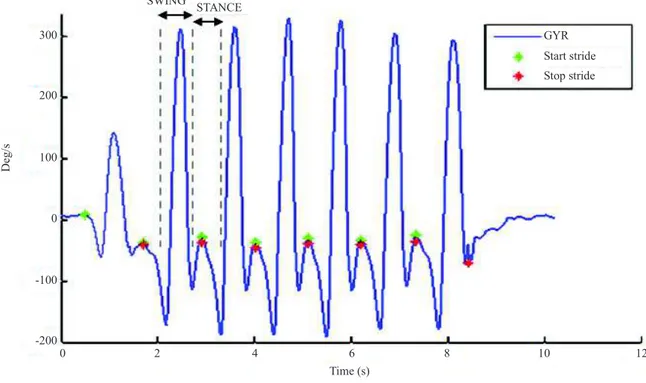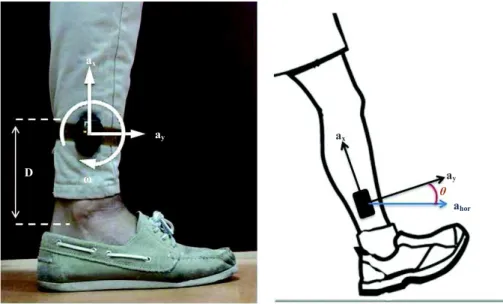Implementation and validation of a stride length estimation algorithm, using a single basic inertial sensor on healthy subjects and patients suffering from Parkinson’s disease
Texte intégral
Figure




Documents relatifs
1 and Algorithm 1 reveals data depen- dencies among the steps of the sequential algorithm (e.g. to compute the electric field we need to compute the magnetic field and the
This paper presents a JPEG-like coder for image compression of single-sensor camera images using a Bayer Color Filter Array (CFA).. The originality of the method is a joint scheme
In this paper, we propose a new stereovision system that aims at tracking the region of interest to keep it in sight and computing accurate depth map as shown in figure 1.d. The
Particularly, we developed the algorithm for a case where the source signal is unknown and random, and the sensors are not synchronized in sampling. The accuracy of the
A mobile GNSS-enabled user device, after having computed its location from the received GNSS signals, sends the location and the navigation data to the Localisation Assurance
L’une théorique rassemblant les déférentes informations théoriques concernant l’étiquetage des denrées alimentaires en se basant sur les réglementations en
Screening and Characterization of Antiglycoxidant Anthocyanins from Vaccinium myrtillus Fruit Using DPPH and Methylglyoxal Pre-Column HPLC Assays...
C’est dans une démarche indemnitaire qu’a émergé le régime de responsabilité sans faute en matière médicale et toujours dans cette démarche que la loi du 4 mars 2002


